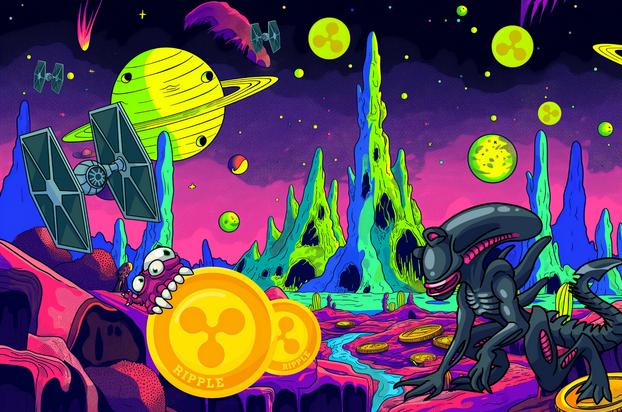ARTICLE AD BOX
It all began with the words: Bitcoin: A Peer-to-Peer Electronic Cash System
With those words – Bitcoin was born.
To further demonstrate the point this is the first paragraph from the Bitcoin whitepaper:
Abstract. A purely peer-to-peer version of electronic cash would allow online payments to be sent directly from one party to another without going through a financial institution.
It’s hard to get around the word “cash” in the Bitcoin whitepaper.
Now – around 15 years after the Bitcoin whitepaper hit the net – Bitcoin is a global name. But it isn’t cash.
The Asset Trap
Bitcoin was not designed to create wealth via price appreciation. There is a great reason for this – price appreciation reinforces the value of the existing monetary system. People want to own Bitcoin and other tokens because they will rise in value – based on fiat currency.
Now – Bitcoin and cryptos are an asset class. People want to hold the assets as they rise in price, but this is a vicious cycle. As prices rise, no one will want to use these tools for their intended function – which is cash.
No, everyone from MicroStrategy to the punter up the block is holding BTC. Given how people treat cryptos, the SEC can be forgiven for mistaking them for assets. Everyone – including the biggest asset managers (BlackRock) on earth – are treating cryptos like an asset.
One could argue that some people will always horde cash. In the case of Bitcoin, the “cash” is rarely used by anyone.
Crypto Assets Are A Problem For Digital Cash
Cash is the base of any financial system – not assets.
Cash is used to value assets. One never spends real estate at the supermarket. The idea is absurd. If you want to buy something – you use cash in some form. Most people use digital cash today – which is exactly what Bitcoin was designed to be!
Instead of adopting cryptos like BTC, ETH or XRP as cash – they have become assets that are highly leveraged to global liquidity flows. The crypto market is the wild west of modern investing. People come to make their fortunes – and many get shot up at high noon.
Central banks mismanaged the global financial system to the extreme – and now a torrent of fiat currency is pushing up just about everything. We totally understand why people are flooding into cryptos – but the underlying purpose of the technology is almost totally overlooked.
Cryptos were designed as cash – not an asset.
Frozen Supply
Unlike fiat currency – there are a finite number of Bitcoins. It is basically true for every crypto at any given moment, although some popular blockchains aren’t limited in total quantity over time. The point being – if cryptos are locked up as assets – they aren’t being used as currency.
It might seem like an academic argument – but crypto ETF inflows remove supply from the market. There is no crypto central bank, so less supply means bigger price swings, especially with increasing interest in the “asset”.
The opportunities to profit in fiat currency are amazing – but no one is going to want to use cryptos as cash. You can invest in the assets and likely make money if you can handle the vomit-inducing volatility – but keeping it around to pay for coffee and pastries is another story.
The Bitcoin whitepaper never talked about making people rich in fiat currency terms. But that is what the crypto markets have become – a speculator’s dream.
Growing Security Concerns
With the profits piling up – few consider the potential for abusing blockchain’s record keeping ability. An open ledger of your financial history – open to anyone – isn’t the greatest feature one would imagine.
Cash in the physical world is private. While there are laws that encourage people to disclose cash transactions – the cash itself is anonymous. In this way – Bitcoin lags behind fiat currency – as it has no physical counterpart.
Crypto mixing technology was promising for privacy.
Governments totally understand that mixers make cryptos a lot more private – and prosecute anyone who can be linked to a mixing platform. Any kind of real privacy in the digital world is apparently illegal – which is worth understanding as digital payments platforms dominate the payments industry.
Stablecoins: The Worst of Both Worlds
With cryptos so volatile – anyone who needs to hold a solid asset in the crypto space turns to stablecoins. Linked to the value of a fiat currency – stablecoins are a huge force in global payments.
Nations that can’t trade via the US-controlled financial system can use stablecoins instead of US dollars. Imagine the convenience!
There is a darkside to stablecoins that few want to discuss. Stablecoins like USDT aren’t just linked to the USD – Tether buys huge amounts of US debt to “back” the value of its products. The more USDT that hits the markets – the more US debt Tether buys.
Demand for USDT is defacto demand for US debt – which is growing all the time.
In addition, stablecoins are easy to both monitor and freeze. In case you didn’t get the memo – governments want to use digital currency as a control mechanism – so stablecoins look a lot like a pilot program for a digital money control grid.
CBDCs Are Coming
So how did a peer-to-peer electronic cash system turn into Tether buying US debt in massive amounts…hmmm…maybe the banking cartel had something to do with it…
Tether CEO Paolo Ardoino is running around telling the world that Tether is super tight (paraphrasing) with the US government – so you can feel safe using USDT!
The US government wants money it can control – so if you are into privacy and personal sovereignty you may not be reassured by what Paolo is spewing for the benefit of Tether.
A more concerning theme is the use of major stablecoins as a landing strip for CBDCs – and the ultimate disuse of cryptos as a currency. With cryptos forever the volatile asset on the edge of the macro liquidity ecosystem – Bitcoin will never fulfill its goal of being a peer-to-peer electronic cash system.
Unless you consider money center banks like JP Morgan a peer.
The HODL Silver Lining?
If you came to cryptos looking for profits measured in fiat currency – you will be happy in the coming years. The price of everything will rise – and cryptos will ride a storm surge of fiat currency to incredible heights.
The downside to the crypto rally is failure after failure in the financial system. People aren’t prepared to watch businesses close, money become worthless, and the social structure implode. When fiat currency goes bust – bad things happen.
A slick crypto speculator might be able to buy a lambo and a mansion – but they won’t be able to leave with mobs burning the city to embers. Wealth only has value in a wealthy society – otherwise it makes the rich a target.
Bitcoin was created to empower decentralization. A global economy of peers. Now, it is an asset, locked away for those who have – who are waiting to spend it in hell on earth.
 10 months ago
461003
10 months ago
461003










 English (US) ·
English (US) ·